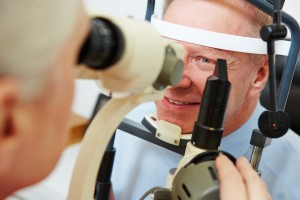Posted by: Georgia Eye Physicians and Surgeons in Latest News
As much as we may like to avoid it, getting older is inevitable. While a great deal can be done to help keep the body fit and the mind active as we age, there are still some signs of physical aging, some natural changes that occur in the body, that are simply unavoidable. Most significant of these is the slow loss of tissue elasticity, a gradual process where the body’s tissues, like rubber bands that have been stretched too many times, become loose and start to sag. In the face, this causes drooping jowls, wrinkles, and furrowed brows. In the eyes, this causes presbyopia.

Presbyopia is an extremely common condition, but fortunately the symptoms can be treated in a number of different ways. Prescription glasses, usually bifocals or progressive lenses that allow for two different prescriptions in a single lens, can help improve focus at close range, as can multifocal contact lenses. However, if glasses or contacts are undesirable, then surgery may be an option. Just like a facelift can lift and firm facial tissues that have started to lose elasticity, laser-assisted in situ keratomileusis (LASIK) and photorefractive keratectomy (PRK) can both use lasers to reshape the cornea, making it easier for the deteriorating lens to focus light on the retina. Finally, the lens itself can be replaced completely with an intraocular lens implant. Some lens implants correct only for either distance or near vision, but the more advanced and sophisticated ReStor® Premium IOLs are designed with apodized diffractive and refractive technology to allow for patients to have an easier time focusing at close, intermediate, and far distances.
New procedures that reverse presbyopia are being developed and tested all the time, and at Georgia Eye Physicians and Surgeons we strive to stay on the cutting edge of all the latest developments in vision treatment. If you have any questions about the various conditions of the eye, or would like to schedule an eye exam, please contact us today to make an appointment. Be sure to follow us on Facebook, Twitter, and Google+ for more tips for healthy eyes.

